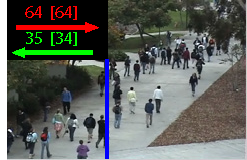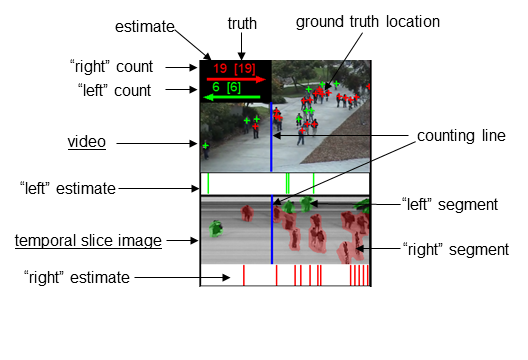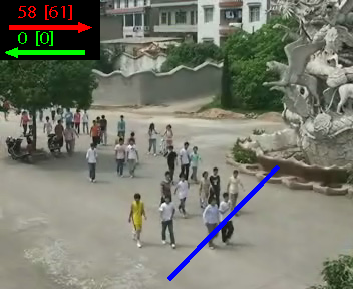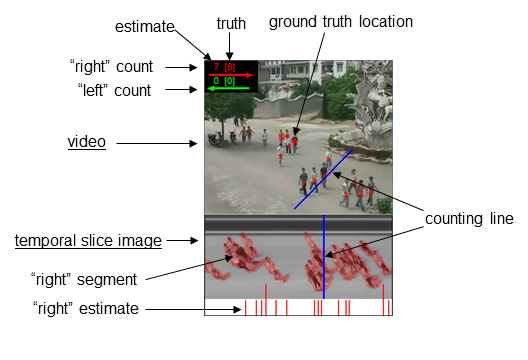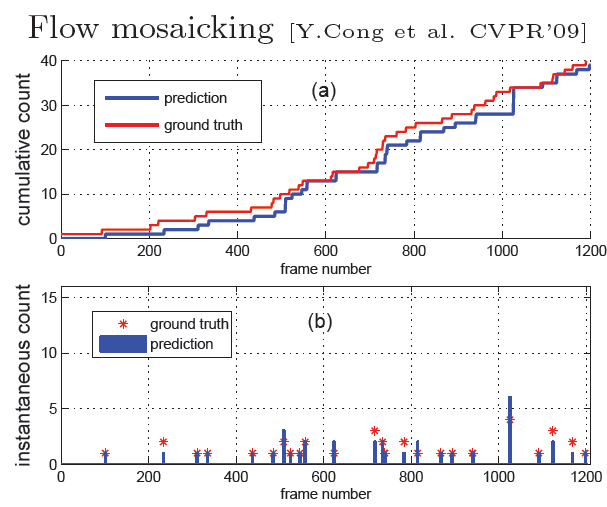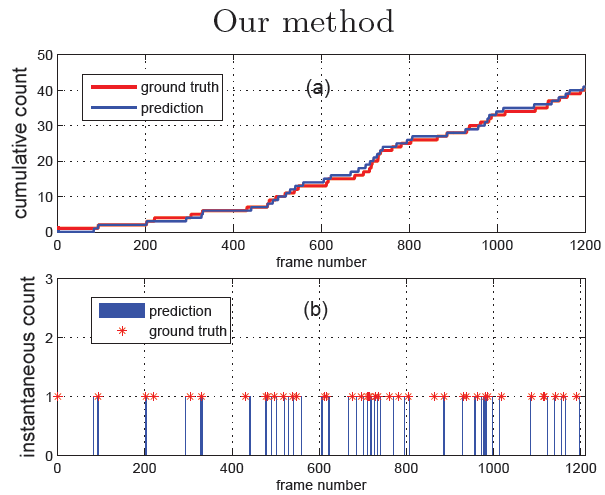Line counting results on UCSD dataset
Example video frame showing line-of-interest:
Temporal slice image with instantaneous counts marked above and below the slice image:
Demo Video: video_ucsd.mov – counting results for the UCSD pedestrian dataset (2000 frames), with 1200 frames for testing and 800 frames for training. An example video frame is shown below:
Line counting results on LHI dataset
Example video frame with line-of-interest:
Temporal slice image with instantaneous counts marked below:
Demo Video: video_3-3_LHI.mov – counting results for the video 3-3 (2000 frames) of LHI crowd dataset, with 1200 frames for testing and 800 frames for training. An example video frame is shown below:
Comparison of Flow-Mosaicking and our method
Flow mosaicking results [Y.Cong et al. CVPR’09] and ours on UCSD dataset (left direction). Flow mosaicking algorithm learns a mapping between features and number of people in a blob. Therefore, the instantaneous count for flow mosaicking is the number of people in a blob.
Cumulative counting results are evaluated in terms of absolute error and mean square error for people moving towards left/right direction respectively.

Instantaneous counting results are evaluated by recall curve. Recall curve represents the accuracy of detecting a person crossing the line within duration t of the ground truth crossing. For our proposed ling counting algorithm, 85% people are detected within 2 seconds.


